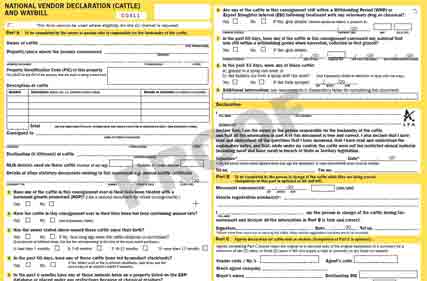
The eNVD system can be used to submit and retrieve eNVDs for property to property movements, or movements to feedlots, saleyards and abattoirs.
Producers now have a cutting-edge electronic platform for the transfer of national livestock declarations at their finger-tips.
Launched this week by the Integrity Systems Company (a wholly-owned subsidiary of Meat & Livestock Australia), the electronic National Vendor Declaration (eNVD) will transfer Livestock Production Assurance (LPA) information, as well as animal health declarations, Meat Standards Australia (MSA) declarations and National Feedlot Accreditation Scheme (NFAS) delivery documentation.
The eNVD system is a significant step forward for the red meat and livestock industry and underpins Australian red meat’s enviable reputation worldwide.
Dr Jane Weatherley, Integrity Systems Company Chief Executive Officer, said the introduction of the eNVD is a major development in a broad program to utilise more digital tools and technologies in the red meat industry.
“Australian producers have a strong reputation for delivering quality red meat into more than 100 international markets backed up by food safety, product integrity and traceability. This is enhanced by our world-leading systems including the NVD,” Dr Weatherley said.
“A fully functional eNVD platform will make life simpler for producers. It will reduce time spent completing livestock assurance and health declarations and managing historical NVDs for auditing, reporting and administrative purposes. It will also ensure the latest NVD is being used.”
The eNVD system can be used to submit and retrieve eNVDs for property to property movements, or movements to feedlots, saleyards and abattoirs.
The LPA eNVD is free and available from the LPA Service Centre website at https://lpa.nlis.com.au/. For individual supply chains that do not yet accept eNVDs, it can just be printed out. Its use is not compulsory and producers can continue to use paper NVDs which cost $40 (GST inclusive) per book or eDecs.
“In choosing to use it, producers will ensure they are providing information that meets the latest market requirements,” Dr Weatherley said.
“It’s not just on-farm where we’ll see the benefits. For feedlots, saleyards and processors, it reduces the likelihood of inaccuracies in information received from producers, and makes the information easier to store and retrieve. Most importantly, it provides greater visibility of the incoming livestock’s details before the stock arrive, enabling more efficient management.
“
